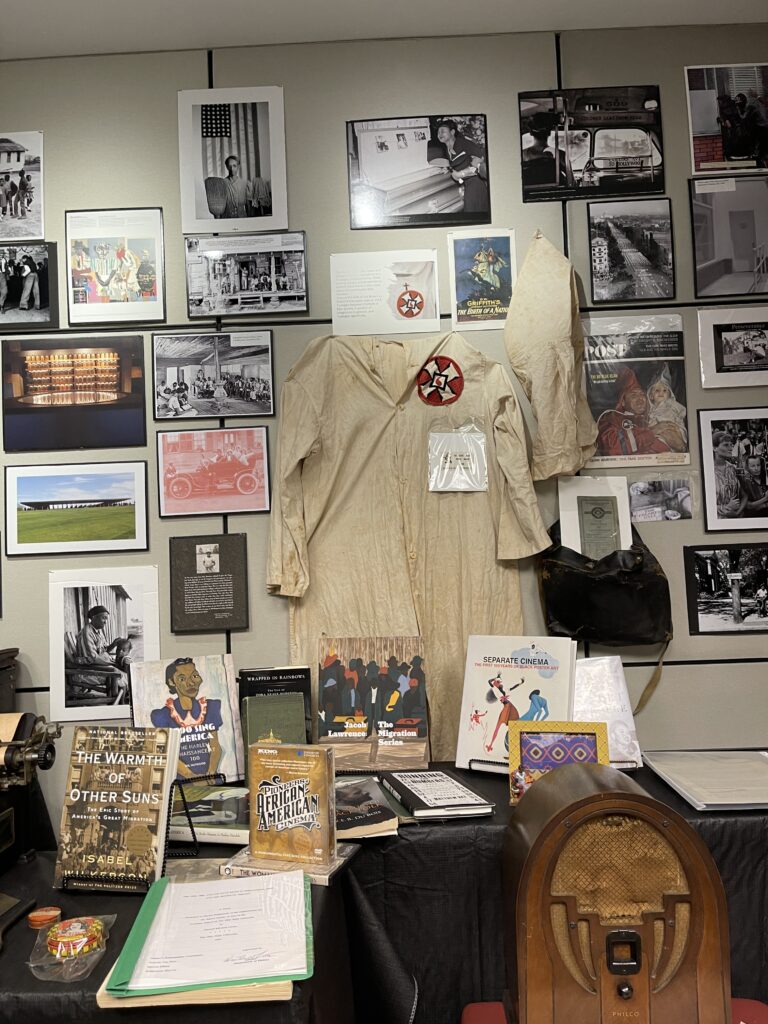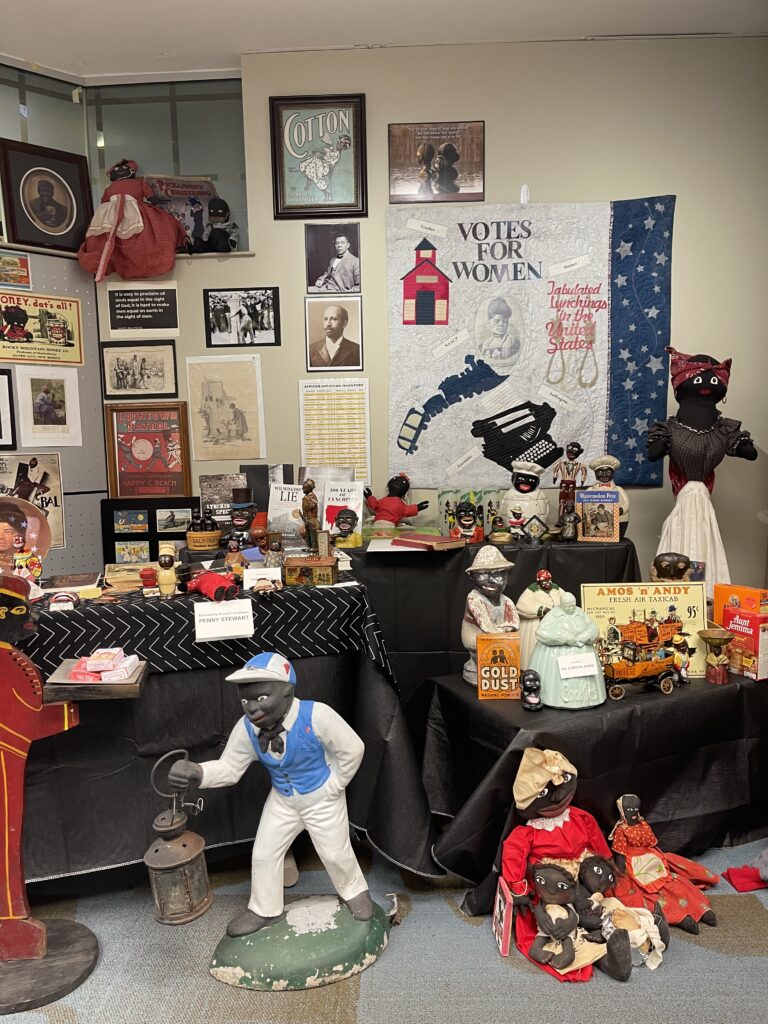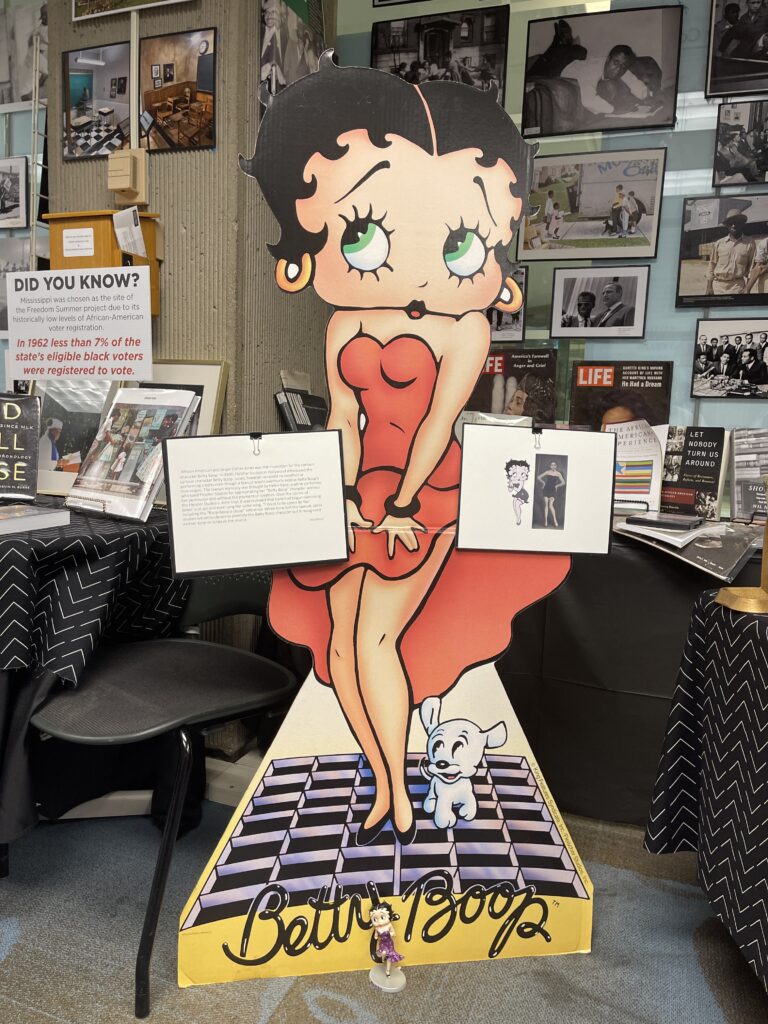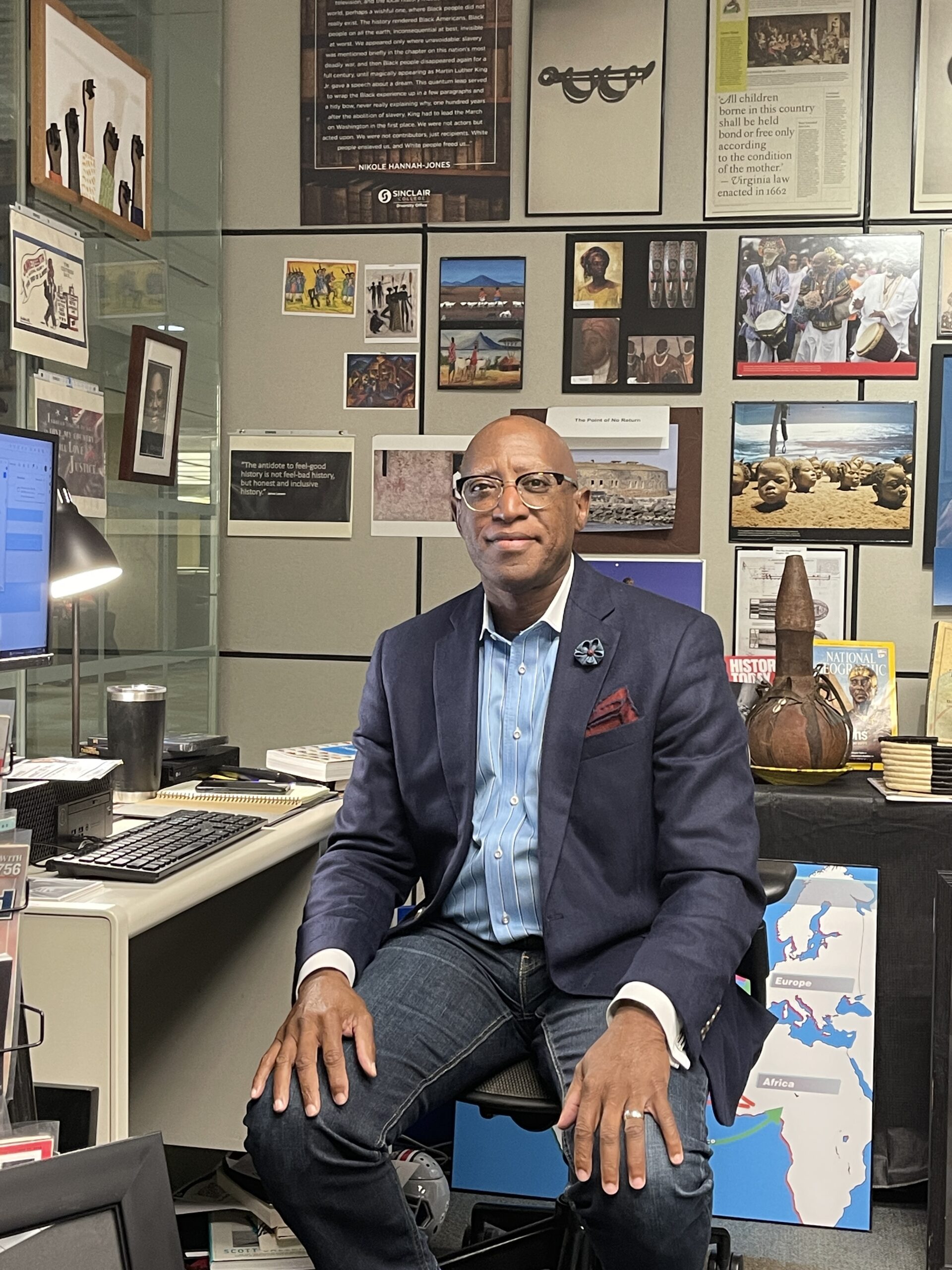Michael Carter discusses diversity in the exhibit
Students and faculty should know that there is an amazing gem on campus in the form of Sinclair’s Chief Diversity Officer, Michael Carter. We recently sat down with him to learn about the amazing space he created in the library and the upcoming events from his department, including an evening with an anti-apartheid activist.
As Carter explained, the stories of marginalized groups must be told because only in truth can understanding and acceptance be gained and fear diminished. Anyone who has not been to Carter’s incredible exhibit in Building 7 above the library should be prepared to be enriched by its thought-provoking displays.

Some might wonder why such an exhibit is important. In answer to that, Carter states that he hopes people will gain knowledge they can use in their daily life to help them become an anti-racist, someone who believes in the underdog, and a supporter of others. Every artifact within the walls of room 001 holds a story to be told, knowledge to be gained, and understanding to be embraced. Carter encourages visitors to interact with the artifacts on display, pick them up, look at the books, and feel the power behind the history and passion of each piece.

Thanks to that approach, many visitors have learned about the contributions of black and brown people as well as many parts of history that are not taught in school. When I look back at what I learned in school about black history, suffice to say it is about the same as what I learned of my own culture Native American: nearly nothing and what was taught presented was presented mainly through the eyes of European men. The lack of diversity in reading material used to teach history leads to a one-sided view of how we got to where we are today.
Below are just a few examples of what I learned from this exhibit:
- Around 25% of all cowboys in the American West between 1860 and 1880 were black. How many black cowboys do you see in TV movies?
- Every golfer has George P. Grant, a Harvard-educated black dentist for inventing the golf tee in 1899.
- There was a football team of all black soldiers at West Point in the 1920’s some 40 years before Army football officially broke the color barrier and integrated their teams in 1966.
Fall events from the Diversity Department at Sinclair.
Mama Bears – A Sinclair diversity film series screening in partnership with The League of Women Voters.
Spread across the country but connected through private Facebook groups, over 30,000 mothers in America—many from conservative, Christian backgrounds—fully accept their LGBTQ+ children, and they call one another “mama bears” because of the ferocity with which they fight for their children’s rights. Although they grew up as fundamentalist, evangelical Christians praying for the souls of LGTBQ+ people, these mothers are now willing to risk losing friends, family, and faith communities to champion their kids even if it challenges their belief systems and rips apart their worlds.

An intimate, thought-provoking exploration of the journeys of two mama bears and a young lesbian who struggle for self-acceptance exemplifies why the mama bears movement is vitally important.
Oct 12th
Diversity Film Series: Happy – In-person film screening
Diversity Film Series: Happy. Join us for an in-person viewing of the 2011 documentary, directed by filmmaker Roko Belic, who takes us on a journey from the swamps of Louisiana to the slums of Kolkata in search of what really makes people happy. Discussion immediately following the screening, facilitated by Sinclair’s Senior Advisor to the President/Chief Diversity Officer, Michael Carter.
Article and photos by
Karen Shirk
Graphics Designer

